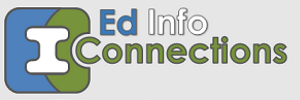Excerpt from the book Assessing the Educational Data Movement to be published in April, 2013
One of the issues to emerge in policy discourse and from funders as the educational data movement was taking hold involved personalized learning. While education has seen pendulum swings around standardization versus personalization for decades, what is new is the idea of using data and information to drive individual attention to student needs. While other fields are routinely using datasets about specific customers, and others like those customers, to present more relevant options and services, the classical model is still largely focused on providing the same options to students irrespective of what information about those students might suggest. What has been done in other fields is to use data about individuals to help segment and divide a large market into smaller groups to which services can be targeted. Of course, students within a classroom and teachers within a school are already part of a small group. It is possible that there are others like those students or those teachers in different locations that that data can provide some opportunities to see what types of approaches and tools work well with different students and teachers that have similar characteristics.
Personalization does occur in education today. However, the decisions about tailoring to specific students are largely the responsibility of teachers and school staff. Large-scale information-driven personalization is a concept, a dream, at this point in education. The data do not yet exist or are not yet sharable across a wide scale for this to be possible. Further, the classical model of teaching, and the structure of schools built around it, is not designed around using large amounts of information to personalize learning. Personalization is largely left up to a handful of professionals—classroom teachers and specialists—who may or may not perform this in the optimal way. Many teachers and indeed many schools find their practice constrained by cycle of test preparation and response. However, the potential for a flexible and dynamic educational process appears to exist and there are some tools and early programs suggesting that it is at least possible for the technical core to be altered for more individual attention.
While there have been pressures in many schools to meet individual needs, the shift toward VAMs and other growth models being used to evaluate teachers may help to drive more emphasis on individual student growth. By focusing on growth, it becomes necessary to orient toward students (and teachers) from where they begin in any developmental sequence and how they can progress through some interactions with curriculum, teachers, and programs. These teacher evaluations are occurring for many reasons. They also represent part of a fundamental reorientation in the field, especially as it becomes clear that the large majority of teachers are in the middle of the distribution where there performance is neither great nor awful and so there are likely needs for targeted professional development to grow teacher skills. Rather than attempting to move uniform groups of students through a standard curriculum and treating teachers as interchangeable, which the data shows they are not, there is a pendulum swing towards individual needs and skills.
Digital personalization involves leveraging sometimes large datasets to make personalization the norm rather than the exception. Digital personalization is an idea aimed squarely at the classical model. While this potential could apply to all students and teachers, special education may be an area where it could be especially powerful since those students are distributed across wide areas with great variation in conditions. In many cases the combination of conditions for any specific special education student are not found in others within the same school system so that large scale databases that could identify parallel situations could be leveraged to learn about how to personalize support for that student and other students with similar circumstances. In some ways, digitally personalized learning is analogous to interim assessments discussed in Chapter 6. From one perspective and set of logics it makes sense, but there are significant gaps in research that demonstrate the actual need. There is a theory that lack of individual attention and personalization may be a cause for lower productivity and engagement. At the same time there are socio-cultural theories that learning occurs in groups that may complicate a highly personalized approach to schooling. Nevertheless, personalization is a new strategy of reform—a gambit many funders are convinced is a winning strategy—and the resources are being applied to see if it can be successful.

Leave a Reply